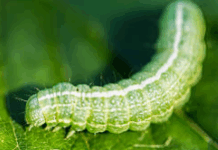Taylor Jamison
K-State Research and Extension news service
A common problem many homeowners face is wasps taking up residence in their walls. Kansas State University entomologist Raymond Cloyd says, however, that not all wasps are harmful.
“Wasps are beneficial, and they are part of the ecosystem,” Cloyd said. “They are predators to pest caterpillars and are docile overall. They will usually only sting if agitated.”
Mud daubers and paper wasps are some of the most common wasps seen around homes and will generally not attack people. Yellow jackets are wasps known for attacking people.
Despite some wasps’ beneficial roles, many people may want to remove wasps to remove the possibility of being stung completely, or to protect their home. If seeking to remove wasp nests, Cloyd advises taking into consideration whether the nest is new or mature.
“If the home has a history of getting wasps, such as in late spring or early summer, just knock down the nest as soon as you see them being built,” Cloyd said.
New nests can be removed without much risk of being stung, since there will be fewer wasps around. Wasps generally don’t rebuild nests in the same location, so this can be an effective preventative measure.
Spraying nests with an insecticide should be done at night while the wasps are in the nest, Cloyd said.
If the nest is large, mature, and has been around a while, Cloyd recommends contacting a pest management professional.
“In order to avoid getting stung, it is best to contact a pest management professional,” he said.
Cloyd said correctly identifying wasps is critical to removal. He recommends contacting your local K-State Research and Extension office and either describing the insect over the phone, or sending pictures via email.




